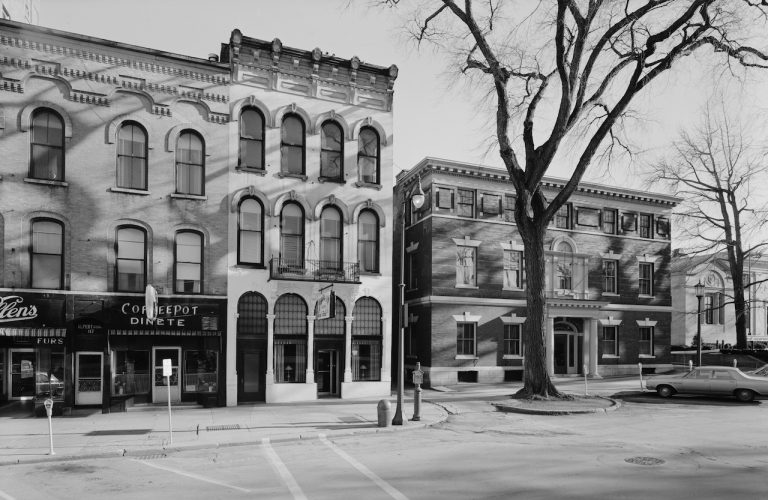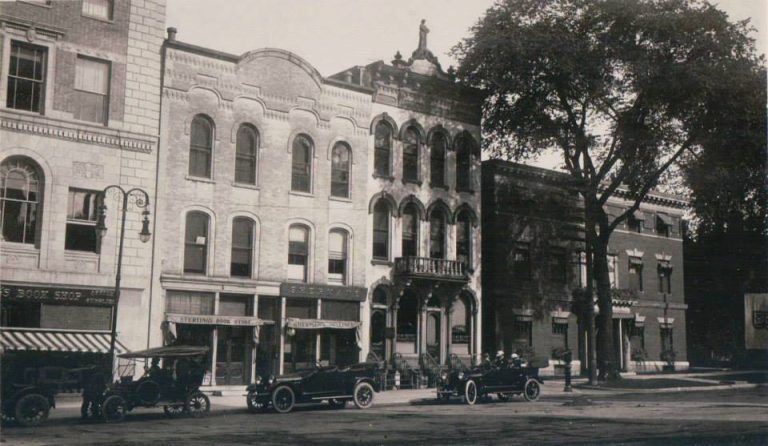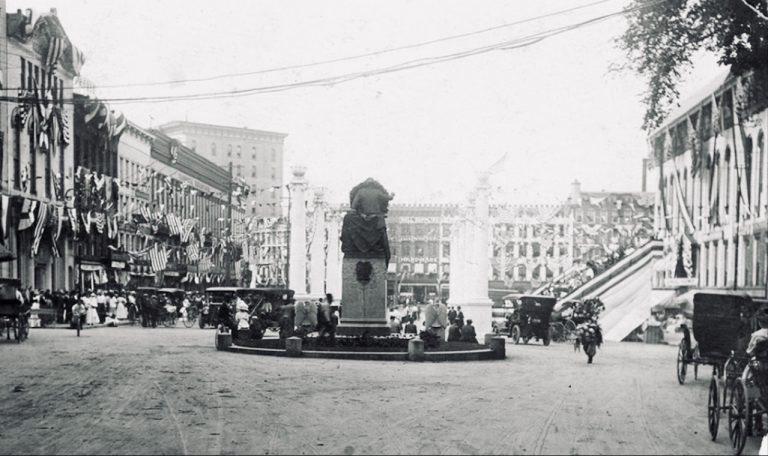A Look at the History of the Black River Valley Club (BRVC) Building
The Black River Valley Club was formed in 1905 under the name “Kamargo Club.” One of their first meetings was held in a room at the Chamber of Commerce, where the name would officially change to the Black River Valley Club due to the Kamargo Club being the name of a literary organization that had recently incorporated in Watertown. The next item on the agenda was to find a location.
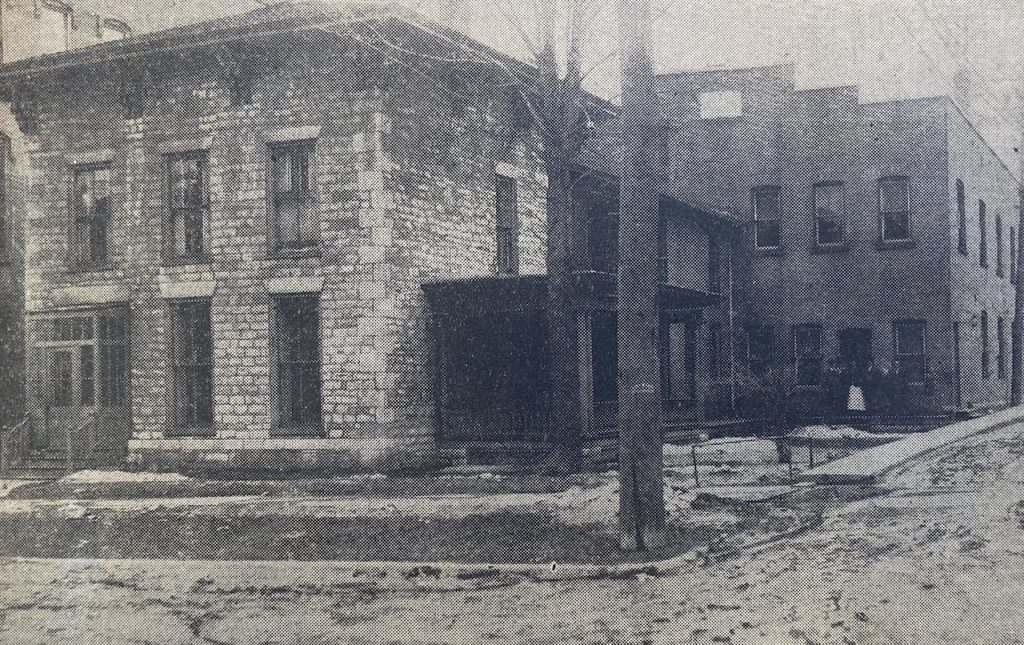
The Watertown Daily Times reported on January 14, 1905—
Following this meeting the board of governors of the new club met the board of directors of the Union club and the property of the Union club was offered to the new organization according to the terms of a resolution of the board of directors of the Union club. Subsequently the board of governors of the Black River Valley Club voted to accept this offer.
The former Union Club would move into the property in 1891 after it was sold to them by Dr. Farmer, who had resided there since 1883. The structure, credited as the first stone house built in the village of Watertown, was believed to have been erected in 1812, though some newspaper articles later reported it as being in 1820. Regardless of its construction date, the Black River Valley Club would decide to adopt plans for a new building within a month and a half of occupying the former Union Club.

On February 13, 1906, the Watertown Daily Times broke the news of the details for the new club building–
PLANS FOR NEW CLUB HOUSE
To Be Let Tomorrow — Five Bids Received — The Building to Cost About $35,000.
Architects Thane & Thane of New York, who designed the plans for the Black River Valley Club’s new home to replace the present Union Club rooms in Washington Street, are in the city today, and tomorrow will award the contract for the erection of the building. Five bids, from both local and out of town firms, have been received.
With the contract awarded Saturday it is not improbable that work on the site will begin Monday or at least during the fore part of the week. Some excavating will probably be done first, before the work of demolishing the old club house will be started. Part of the stone work in the present building will be used for the foundation of the new.
Plans for the Black River Valley Club house were given in the Times of March 18, 1905, only a few slight changes having been made in the design. It will be Georgian or Colonial in style, three stories high and constructed of Harvard brick, trimmed with buff Indiana limestone, with metal cornice, balustrades, etc. The design is elaborate, and when completed will form a most beautiful structure.
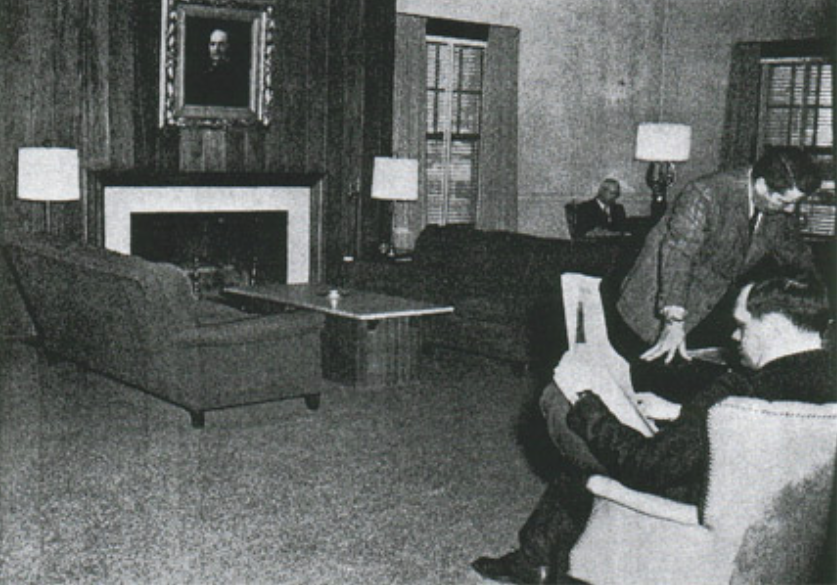
The main entrance will be at the front, with a ladies’ entrance, communicating with the stairs, on the north side. The lounging and newspaper room, 21×32 feet, will be at the right of the main entrance, with the library and office opposite. The cafe, billiard room, cloak rooms, etc., and the bowling alley, the latter at the rear of the main structure, will complete the first floor.
The second floor will be devoted to card and chess rooms and a spacious ball room over the bowling alley. The third floor will be given to bed rooms, bath rooms and steward’s quarters. The entire cost of the building is estimated between $30,000 and $35,000.

The groundbreaking for the new Black River Valley Club occurred about the same time as that for the new Solar Building. After an extensive interior decorating job was completed, the Times would report the building’s grandeur on June 1, 1907–
CLUBHOUSE BEAUTIFUL
Luxurious Quarters of Black River Valley Club
When the pictures purchased to adorn the walls of the new Black River Valley Club in lower Washington Street are received and hung and a few more pieces of furniture, now en route, arrive, the house will be one of the best decorated and furnished social headquarters to be found any where in the state.
In planning the furnishing and fixtures, the purchasing committee has been guided with the thought that the best is none too good, and consequently there has been assembled an outfit that is at once luxurious, comfortable, attractive and Rich. Wall decorations, draperies, floor coverings and furniture were selected only after the color schemes and effects were carefully studied out, resulting in harmonious combinations in each room and decided individuality and character in the several rooms.

The building would officially open on June 27, 1907, and a who’s who of Watertown would be elected to its board of governors, including O. E. Hungerford, George W. Babcock, and James R. Miller, who held the first of the three-year terms.
Things That Go Bump In The Night
In August of 2013, the Watertown Daily Times featured a front-page story, “Spirited Search For Paranormal,” by Steve Virkler, that opened with “Is the Black River Valley Club haunted?” Nearly 20 paranormal investigators, a WDT reporter, and photographer, spent a Saturday night investigating to find answers. Per the Times article published August 19th–
In an email Sunday, Ms. Putnam (Lana M. Putnam, founder and lead investigative adviser of Paranormal Investigations of the St. Lawrence Seaway) said the “investigation resulted in activity of interest on every level of the club, including temperature changes, unexplained noises and shadows and even shadowy figures seen in the basement and elsewhere.
Video and audio recordings had yet to be reviewed. Still, plans were to reveal the full investigation results as a fundraiser for the American Red Cross in September of that year. According to The Times, the event was suggested to “substantiate a litany of bizarre experiences of club members, staff and other visitors.”
Over the years, incidents such as the smell of tobacco smoke and items inexplicably moved or misplaced, only to turn up again later, have happened. Even a discussion on the You Haven’t Lived In Watertown, NY, If– Facebook page had some interesting comments.

BRVC Disbands, Northern New York Community Foundation Buys Building
In 2014, the Black River Valley Club faced financial difficulties and sought to raise membership dues. The problems would persist, however, inevitably leading to the 110-year-old club’s closure in 2015. Items, including furnishings and restaurant equipment, would be auctioned off just before Christmas as the building’s new owner and tenant, the Northern New York Community Foundation, was readying plans to modify, move in, and convert the little-used third floor into the Northern New York Philanthropy Center.
Established in 1929, the Northern New York Community Foundation provides grant funding to non-profits and scholarships to people across Jefferson, Lewis, and St. Lawrence Counties. Part of their planning of the space was to demolish the back section of the building and replace it with a 4266 sq. ft. addition. In its November 27 article, the Daily Times spoke of the building’s historical significance with Northern New York Community Foundation Executive Director Rande Richardson–
The front of the building, considered the more historic portion, “is what most people identify as the Black River Valley Club,” Mr. Richardson said.
To honor the building’s rich history, Mr. Richardson said, historical items would continue to be displayed under the plan, including a historic map of the north country and club-related photos and artwork, along with a grandfather clock in the lobby.

Bernier, Carr & Associates, who just recently (2021) announced their plans to move operations to the Woolworth Building’s ground floor in 2022, designed the project for the Northern New York Community Foundation, which would move into the former Black River Valley Club building in early 2017.
Below is a video of the demolition of the back portion of the former Black River Valley Club, which was constructed in 1905 when the old Union Building was located there. This portion of the building was home to the billiards room, an open space for theater productions, a banquet room on the second floor, and the bowling alley in the basement.



